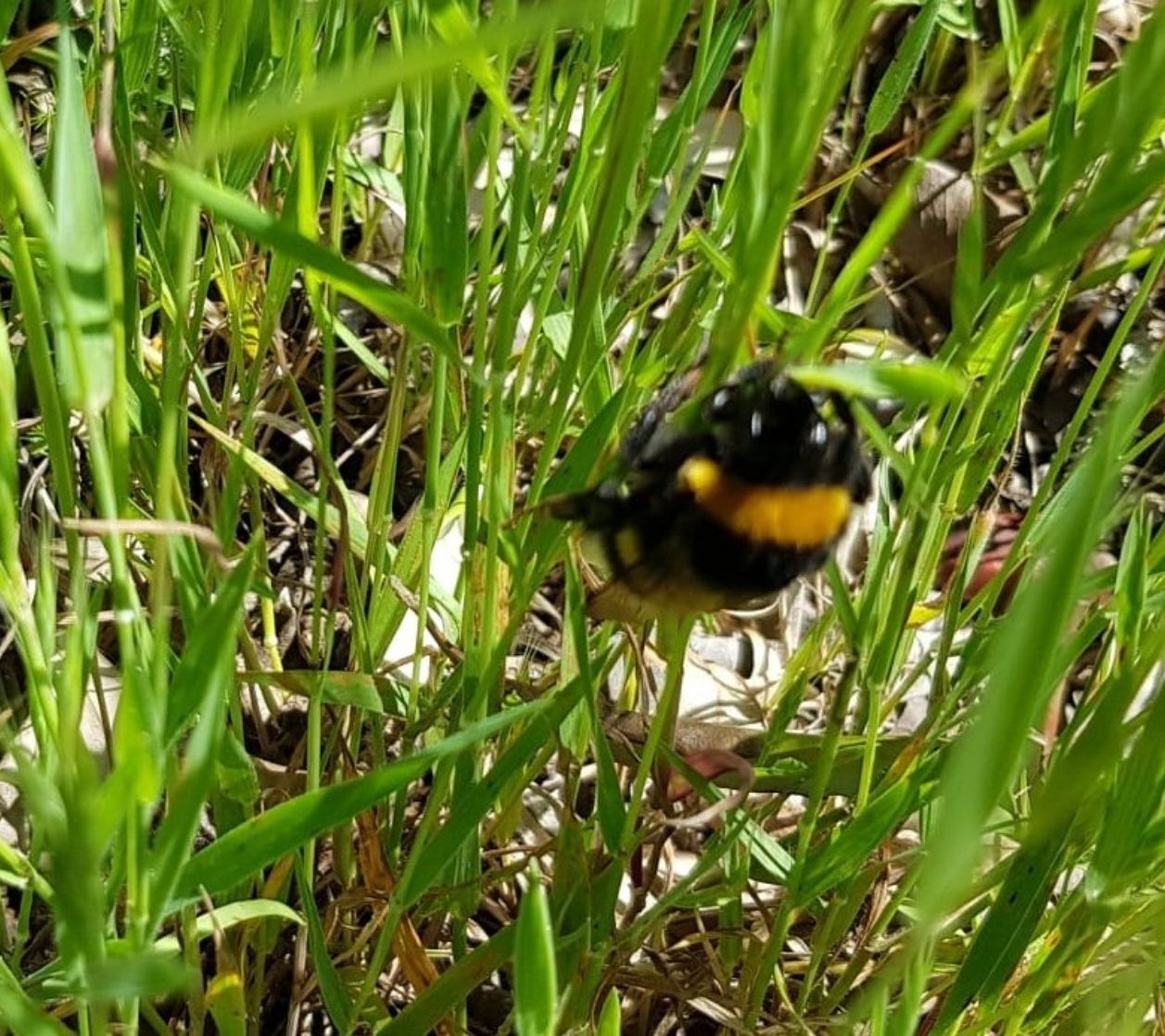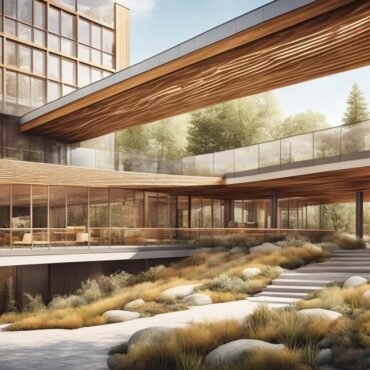The preservation of biodiversity is a critical part of ensuring a healthy future for our environment. But what is Biodiversity Net Gain?
In an effort to further understand this important concept, let us explore the science behind it and how it works. Biodiversity Net Gain is a system designed to increase the amount of biodiversity existing within a given area. It focuses on the rehabilitation of species and habitats to boost their numbers and create a better balance between them.

The aim is to preserve current and future species and habitats, creating a more sustainable ecosystem. This process is typically managed by local authorities, who are responsible for setting out the goals for a project, providing advice on how to achieve these goals and ensuring that the necessary steps are taken.
Below you can tune into one of the UK’s top Environmental Lawyers about Biodiversity Net Gain
To understand how biodiversity net gain works, it helps to consider the impact of human activities such as land conversion and development, as well as climate change, on biodiversity. These activities can reduce or even completely remove certain species and habitats from an area, leaving others at risk of dying out.
Biodiversity net gain aims to reverse these impacts, restoring the balance between species and habitats and helping to protect them in the future. To do this, it looks at a range of factors including land use, water source protection, and other environmental considerations. By understanding these concepts and what they mean for the environment, we can better appreciate the importance of preserving biodiversity and the benefit of utilizing biodiversity net gain in our efforts to protect it.
So, what does biodiversity net gain mean for the environment? What steps should we take to ensure that our efforts are as effective as possible? Read on to find out!
What is Biodiversity Net Gain?
Biodiversity Net Gain is a conservation effort in which development projects are required to offset any damage done to the natural environment by creating habitats for wild plants and animals that are at least as good as they were before. It is a policy introduced in the UK in 2019 to increase biodiversity and help protect the planet.

Biodiversity Net Gain is a way for developers to ensure that any damage caused to the natural environment by their development projects is offset by creating new habitats that are at least as good as the ones that were lost. This helps to protect the planet and its inhabitants by creating more habitats for all kinds of wildlife.
The goal of Biodiversity Net Gain is to create habitats that are better than the ones that were lost. This means that developers must make sure that the habitats they create are of a higher quality than the ones that were destroyed. This is done by planting native trees, rebuilding wetlands, and replacing areas of grassland with wildflower meadows.
These new habitats must also be able to support the species of wildlife that were lost. Developers must make sure that the habitats they create meet the needs of the species they are aiming to protect. This includes making sure that the habitats are large enough and have enough food and shelter for the wildlife they intend to help.

In some cases, developers may also need to introduce new species of wildlife into the habitats they create to ensure that the habitats are more diverse and able to support a wider variety of wildlife.
Another important part of Biodiversity Net Gain is monitoring. Developers need to monitor the habitats they create to make sure that they are meeting their goals. This includes monitoring for species of wildlife that have been reintroduced or new species that have been introduced into the habitats.
Biodiversity Net Gain is an important tool in protecting the environment, as it helps to ensure that any damage caused by development projects is offset by the creation of new, better habitats. This policy is helping to ensure that our planet remains healthy and that the species of wildlife that were lost are able to thrive in their new homes.
Listen to the immediate Past President of the Landscape Institute on how when we damage nature, we damage our own health
Benefits of Biodiversity Net Gain
Biodiversity Net Gain (BNG) is a concept that seeks to promote the conservation of biodiversity while balancing development. It is an approach to development that seeks to put in place strategies that ensure that the ecosystem remains intact and that the benefits derived from it are sustained. This concept has become increasingly important in the context of global climate change and the associated effects on the environment.
Biodiversity net gain is achieved when the biodiversity associated with a given development is increased over what it was prior to the development taking place. This increase is determined by comparing the biodiversity before the development to that after the development has occurred. For example, a development may increase the number of species found in an area, or the quality of the habitat for them to thrive in.
Biodiversity net gain is attractive to developers and local governments as it helps to create a balance between development and conservation. It helps to ensure that development projects are undertaken in such a way that the environment and biodiversity are not adversely impacted. This, in turn, helps to create a healthier environment for both humans and wildlife.
There are several benefits associated with implementing approaches such as biodiversity net gain. Firstly, it helps reduce the impact of development on the environment. By ensuring that the environment is protected from any potential damage, it helps to create a healthier and more sustainable environment for future generations.

Secondly, biodiversity net gain helps to ensure that the local economy is supported. By providing opportunities for wildlife to thrive and increasing the diversity of species, the local economy can benefit through tourism, research, and other related activities. It also helps to protect local jobs and businesses that are dependent on the environment for their livelihood.
Finally, biodiversity net gain also helps to ensure that development projects take into consideration the needs of local communities. Through the implementation of such approaches, developers can ensure that their projects are not adversely impacting local communities and that they are taking into consideration the interests of the people who live nearby.
In conclusion, biodiversity net gain is an important concept that helps to promote the conservation of biodiversity while balancing development. It helps to ensure that the environment is protected from potential damage and that the benefits derived from development are sustained. It also helps to ensure that the local economy is supported and that local communities are not adversely impacted.
Challenges Facing Biodiversity Net Gain
Biodiversity net gain is an important concept in terms of protecting and preserving the environment. It has been gaining traction in the last few years as an important part of environmental protection. But what is it, and what challenges does it face?
Biodiversity net gain is the idea that when development on land occurs, the impacts on biodiversity should be minimized and, ideally, the biodiversity of the area should be improved. To accomplish this, biodiversity net gains often involve creating offsets by restoring or creating habitats for species to use. This could involve planting native species, creating ponds, installing wildlife corridors, or creating green roofs.
The concept of biodiversity net gain is intended to help create more biodiversity-friendly development. However, there are a number of challenges that it faces.
One of the main challenges is that it has not yet been well-defined or regulated.

There is no standardised approach to measuring or achieving net gain, and there is a risk that it could become a tokenistic approach to environmental protection.
Another major challenge is the lack of resources to implement biodiversity net gain plans. Governments, developers, and conservation groups all need to invest time and money into implementing these plans. With shrinking budgets and the current economic climate, this has been a big obstacle to getting biodiversity net gain plans off the ground.
The most significant challenge is the need to balance economic development with biodiversity protection. The goal of biodiversity net gain is to ensure that development does not come at the expense of biodiversity, but in some cases, this can be difficult to achieve. There is often an emphasis on economic growth, and this can lead to decisions that are not in the best interests of the environment.
Finally, there is the challenge of ensuring that the plans are effective. It is all well and good to create plans that will improve biodiversity, but if they are not implemented correctly or monitored, they may be ineffective. It is important to have the right people involved in the process and to ensure that plans are implemented correctly.

Overall, biodiversity net gain is an important concept that can help protect and restore the environment. However, it faces a number of challenges that must be addressed if it is to be successful. These include the need to better define and regulate the concept, the need for resources to implement plans, the need to balance economic development and environmental protection, and the need to ensure that plans are effective.
Best Practices for Implementing Biodiversity Net Gain
The implementation of biodiversity net gain is a complex process that requires careful planning and implementation. There are a number of best practices that should be followed when implementing biodiversity net gain.
First and foremost, it is important to understand the local ecosystem and the species and habitats that are affected by development projects. This information can be gathered through research, field surveys, and expert consultation. Additionally, it is important to consider the potential impacts of proposed development projects on the local environment and how they could be minimised or mitigated.
Once the potential impacts and consequences of a project have been considered, a plan for biodiversity net gain can be created. This plan should take into account the current and future needs of the species and habitats that will be affected by the project. It should also include strategies for protecting and restoring habitats, as well as providing for the needs of those species.
Another important step in the implementation of biodiversity net gain is to create incentives for developers and landowners to participate in the process.

This can be done through the use of financial incentives, such as tax credits, or through the use of legal or regulatory measures. Incentives can also be provided to communities to assist with habitat restoration and management.
Finally, it is important to monitor and evaluate the implementation of biodiversity net gain. This can be done through the use of baseline monitoring, which should include assessments of the health of the species and habitats that are affected by the project. Regular monitoring of the progress of the project can help to ensure that it is having the desired effect and that any necessary adjustments can be made.
These are just some of the best practices for implementing biodiversity net gain. It is important to remember that this is a complex process that requires careful planning and monitoring. By following these best
How the Built Environment Can Help With Biodiversity Net Gain
As global temperatures and carbon emissions continue to rise, the importance of protecting biodiversity is becoming increasingly important. Biodiversity net gain (BNG), or the process of creating more new habitats than are lost, is an essential part of this process. The built environment can be an important tool in helping to achieve this goal.
Biodiversity net gain is a term used to describe the process of replacing habitats that have been lost or degraded due to human activities. This involves creating or restoring habitats that are more resilient to climate change, and providing more suitable habitats for wildlife. This helps to ensure that habitats are better protected and managed in the future.
The built environment can be an important tool for achieving biodiversity net gain.
The buildings, roads, and infrastructure in cities and towns can provide habitat spaces for wildlife. This includes the creation of green roofs, green walls, and rain gardens. These spaces can help to create healthy ecosystems, provide natural habitats for species, and help to reduce the urban heat island effect.
Biodiversity in the built environment Round Table Part 1
Biodiversity in the built environment Round Table Part 2
Cities can also help to achieve biodiversity net gain by creating green corridors that connect to natural areas. This helps to provide safe passage for species to migrate between habitats, and to create a larger and more interconnected network of habitats. Vegetated buffers along roads can also help to reduce the impacts of infrastructure and create habitat corridors for species.
The built environment can also provide opportunities for research and education. For example, green roofs can be used to study the effects of climate change on local species, and educational spaces can be used to engage the public in conserving biodiversity.
By incorporating biodiversity net gain principles into the built environment, cities and towns can create healthier and more resilient ecosystems. This not only helps to protect and manage habitats, but also provides educational opportunities and promotes the appreciation and understanding of biodiversity.

























Post comments (1)